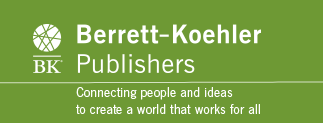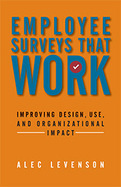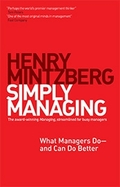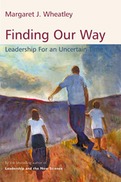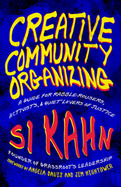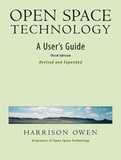* Offers practical guidance for designing employee surveys that yield useful results
* Explains the hidden pitfalls in many popular survey practices
* Written by a rising HR analytics thought leader
Most employees like company surveys (A) Very much, (B) So-so, (C) Not so much, or (D) Not at all. For most, the answer is D. And the same is often true for the executives who have to figure out how to apply the results.
But that's because so many employee surveys are poorly designed, says Alec Levenson. Employees with very different work functions are given the same set of questions, even though their experiences and concerns are wildly divergent. Surveys try to cover too many different kinds of issues at one time, resulting in either a bland set of questions or a survey that goes on forever. Questions are asked without a clear sense of how the answers will help improve the business, the reason for the survey isn't clear to the participants, and employees never see anything done with the results.
Employee Surveys That Work offers sensible, practical ways to make employee surveys more useful, accurate, and effective and counters a number of unhelpful but common practices that have arisen as employee surveys have become commonplace. Levenson provides specific advice for ensuring that the purpose and desired outcomes of surveys are clear, the questions are designed to provide the most relevant and accurate data, and the results are actionable. He looks at a wealth of specific issues, such as the best benchmarking practices, the benefits of multivariate modeling for analyzing results, linking survey data with performance data, how best to measure employee engagement, the pros and cons of respondent anonymity, and much more.
Employee surveys serve an indisputable role in providing a way to measure key organizational processes based on information from the people most informed about those processes-the employees who work with and implement them on a daily basis. But a lot can be done to design, implement, and act on surveys in more meaningful and productive ways. This book provides a road map for doing so.
2013
2007
In short, Margaret Wheatley is one of the most innovative and influential organizational thinkers of our time, and Finding Our Way brings together her shorter writings for the first time, touching on all the topics she has addressed throughout her career, showing how she has applied the ideas in her books s in many different situations. “The pieces presented here”, she writes, “represent ten years of work, of how I took the ideas in my books and applied them in practice in many different situations. However, this is not a collection of articles. I updated, revised, or substantially added to the original content of each one. In this way, everything written here represents my current views on the subjects I write about.”
Provocative, challenging, at times poetic, and often deeply moving, Finding Our Way sums up Wheatley's thinking on a diverse scope of topics from leadership and management to education and raising children in turbulent times; from societal commentary to specific organizational techniques and more.
- By the author of the bestsellers Leadership and the New Science (over 300,000 copies sold) and Turning to One Another, and the coauthor of A Simpler Way
- Wheatley is one of the most innovative and influential organizational thinkers of our time, and this is the first collection of her articles and essays--completely revised and rewritten for this volume
- Covers a wide and diverse scope of topics--leadership, management, education, parenting, social commentary, creativity, spirituality, and more
Si Kahn's impromptu song at BK Author Day Lunch Meeting
2019
This would happen through the creation of what the authors call the Universal Fund, a kind of national, democratic, mega mutual fund. Every American over eighteen would be entitled to a share and would participate in directing its share voting choices. Corporations and wealthy individuals would donate stocks, bonds, cash, or other assets to the fund just like they do to other philanthropic ventures now. The fund would pay out dividends to its citizen-shareholders that would grow as the fund grows.
The Universal Fund is undoubtedly a big idea, but it is also eminently practical: it uses the tools of capitalism, not government, to give all citizens a direct influence on corporate actions. It would be a major institutional investor beholden not to a small elite group of stockholders pushing for short-term gain but to everyone. The fund would reward corporations that made sure their actions didn't harm people, communities, and the environment, and it would enable them to invest in innovations that would take more than a few months to pay off. Which is another reason corporations would donate to the fund—they could be freed from the constant pressure to maximize their quarterly share price and would essentially be subsidized for doing good.
The authors demonstrate that our current economic rules force corporations to be shortsighted and even destructive because for most large investors, nothing matters but share price. The Universal Fund is designed to be a powerful positive balancing force, making the world a better place and the United States a better nation.
Open Space Technology: A Users Guide is just what the name implies: a hands-on, detailed description of facilitating Open Space Technology (OST). OST is an effective, economical, fast, and easily repeatable strategy for organizing meetings of between 5 and 2,000 participants that has been used in thousands of organizations in 134 countries and just keeps growing in popularity. Written by the originator of the method, this is the most authoritative book on the rationale, procedures, and requirements of OST.
OST enables self-organizing groups of all sizes to deal with hugely complex issues in a very short period of time. This step-by-step users guide details what needs to be done before, during, and after an Open Space event.
Harrison Owen details all the practical considerations necessary to create Open Space. He begins with the most important questionshould you use Open Space at all?and examines what types of situations are appropriate for Open Space Technology and what types are not. He then goes on to look at nuts-and-bolts issues such as supplies, logistics, and who should come and how you should go about getting them there.
This third edition adds a survey of the current status of Open Space Technology around the world, an updated section on the latest available technology for report writing (a key aspect of the Open Space process), and an updated list of resources.
